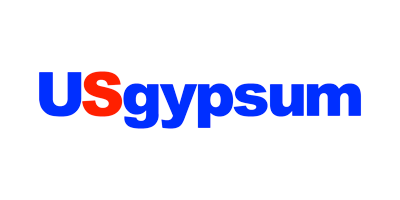USG, also known as United States Gypsum Corporation, is the largest distributor of wallboards in the nation and the largest manufacturer of gypsum products in North America. The company also makes associated products that include joint compound, plasters and paints. Asbestos was a primary ingredient in many of the company’s most popular products, including Sheetrock brand gypsum panels and Fiberock brand panels.
The USG trust started accepting claims in February 2007 and is designed to provide compensation for asbestos injuries related to all USG products. Anyone injured by USG products are eligible for financial compensation from the United States Gypsum asbestos trust fund.
USG and Asbestos Exposure
USG did not warn its employees or customers about the potential problems with asbestos. Most of the USG asbestos-containing products were used in manufacturing, construction and remodeling industries between 1920 and 1978.
The following occupations are considered high risk for USG occupational asbestos exposure:
- Ship Maintenance/ Ship Builders – Everyone who worked on, off or near ships is in danger of asbestos exposure. USG asbestos-containing products were used in ships and shipyards, including in wall insulation and roofing products. Anyone who installed or removed these products was likely exposed.
- Roofers – USG roofing materials, shingles and sidings were widely used across the United States because they resisted heat, fire and other dangers. Roof installers were never warned of the dangers of asbestos in USG roofing materials. Other products, including stucco finish coats, included asbestos as a main additive.
- Construction Workers/ Contractor – In addition to siding and shingles, asbestos was also widely used in cement products, including trowel and sprayed acoustical plaster. Construction workers and contractors, including those who worked in remodeling and remediation, are at high risk for developing asbestos-related diseases from USG products.
- Plumbers / Pipefitters –In addition to being around the use of asbestos-containing products in construction environments when these products were installed, plumbers and pipefitters working in renovation or repair environments may be at risk for exposure to existing asbestos-containing products.
Exposed to Asbestos
See if you qualify for compensation from the US Gypsum Company Asbestos Trust
Get Help NowUSG Asbestos History
USG was formed in 1901 and merged and consolidated with some 30 companies from across the country. In the 1930s, the company expanded its product line to include insulation, ceiling panels and joint tapes. In the 1960s, it added cements and paints to its products portfolio. Asbestos was added to many of the products.
Early on, the United States Gypsum Company tested the ill effects of asbestos dust. In the early 1930s, the company employed a laboratory to study the effects of industrial dust including asbestos. Some research indicates the company knew as early as the 1940s the asbestos-cancer connection but never told its employees or consumers. Medical professionals were warning of the dangers as early as the 1920s.
How was the US Gypsum Asbestos Trust formed?
Between the early 1920s and late 1970s, many of USG’s products contained asbestos because it was an inexpensive additive that was heat, fire and chemical resistant. USG employees and others were exposed to airborne asbestos. Wide-reaching public relations campaigns were used to convince the public asbestos was safe.
In the early 1990s, more than 45,000 USG workers or family members filed asbestos-related lawsuits. In one case, the city of Baltimore sued USG and won $8.16 million in compensatory damages and $4 million in punitive damages for the cost of removing asbestos from the city’s police headquarters. USG filed for bankruptcy protection in 2001 and the reorganization was approved by 2006. From that, the asbestos trust was born. It began accepting claims in 2007.
US Gypsum Asbestos Trust Distribution
USG Trust claims are paid at 12.7 percent of the requested amount for both expedited and individual claim reviews. USG also handles asbestos injury claims for A.P. Green,, a refractory products manufacturer that USG acquired in 1967. Compensation amounts are limited per person to ensure there is enough money to pay for future claims.
In an individual review, the money awarded may be adjusted based on factors that impact the severity of illness. Some examples of these factors include how much the medical claims deviate from the established medical criteria for the disease level, industry of exposure, the claimants age, disability, employment status, how the illness has disrupted their household, and other settlements and verdicts in similar claims.
| Disease | Average USG Payout Amount |
|---|---|
| Mesothelioma (Level VIII) |
$38,750.00 |
| Lung Cancer 1 (Level VII) |
$15,000.00 |
* Most mesothelioma victims recover compensation from multiple asbestos trust funds.
US Gypsum Asbestos Trust Fund Claims
Making an asbestos trust fund claim requires significant documentation to prove your case. Submitting incomplete or incorrect information can cause loss of compensation, or even for your claim to be denied.
The payment percentage impacts the compensation you receive for a successful claim, and the US Gypsum Asbestos Personal Injury Trust’s initial payment percentage was initially set at 45%, and has decreased over time, most recently being updated to 12.7% in. Making a claim sooner helps you receive the maximum compensation for your injuries, and if the payment percentage ever increases you will receive additional compensation to account for that increase.
Filing a claim with a mesothelioma trust fund can be time consuming and tricky, especially proving your exposure to the level required by the trust. Consulting an experienced mesothelioma trust fund attorney who can help guide you through the process can help you receive the compensation you or your loved one deserve for your injuries.
Find Out if you Qualify
Fill out our quick form and see if you qualify for trust fund compensation
Check NowSources
- Miller, James P. “Accord to resolve USG asbestos claims”. Retrieved from http://articles.chicagotribune.com/2006-01-31/business/0601310134_1_usg-shares-asbestos-liability-people-with-asbestos-related-illnesses
- West, Norris P. “Asbestos maker must pay city $8.3 million”. Retrieved from http://articles.baltimoresun.com/1994-09-13/news/1994256083_1_asbestos-punitive-damages-million-in-punitive
- Aldrich, Rachel. “USG Stock Up on $670 Million ABC Supply Deal, Mulls Resuming Dividend.” The Street. Retrieved from https://www.thestreet.com/story/13688023/1/usg-stock-up-on-670-million-abc-supply-deal-mulls-resuming-dividend.html
- United States Gypsum Asbestos Personal Injury Settlement Trust. Retrieved from http://www.usgasbestostrust.com/resources/documents/


